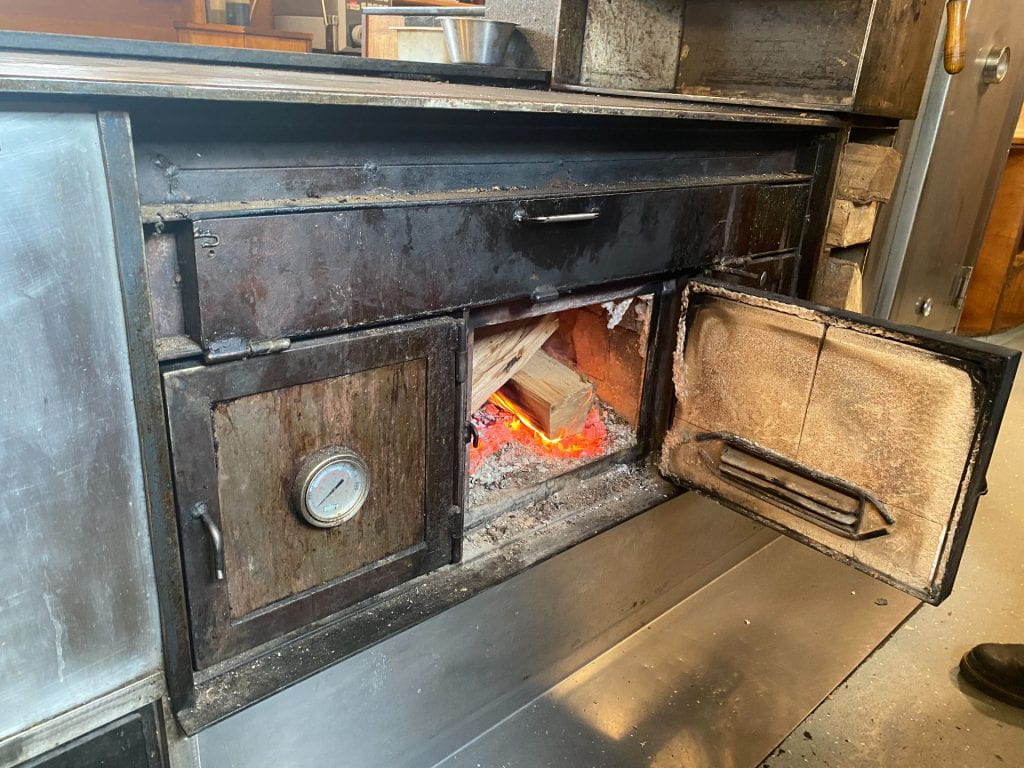Self-built infrastructure, urban gardens and partnerships with local suppliers – restaurants in Copenhagen are an example for impactful change in Europe’s food system. A change, for which policy support is needed.
by Lina Krauß & Zoë Daniëls
Copenhagen is one of the most sustainable cities in the world. Besides the thousands of cyclists and green buildings, there are a lot of sustainable food places. Vandvid is an example of a sustainable restaurant. It is a floating restaurant on a houseboat in Sydhavnen. What makes this restaurant so special, is the big wood burning stove. What the problem is with most restaurants is that they use a lot of energy, for example to heat the restaurant or to prepare the food. Vandvid came up with a solution for this and built a large wooden burning stove. Besides the fact that they use the stove for everything, cooking with fire is way faster than using gas or electricity. They only use 10 percent of the amount of energy “normal” restaurants use.
“I don’t go after to be organic, I am organic. We are the most sustainable restaurant in the world,” claims Ivan Nielsen, one of the owners of the restaurant. Nielsen has a lot of love and passion for everything that has to do with sustainability, and he is a real man of action. He built the whole restaurant himself. He got all the wood, iron and other items needed to build a restaurant from local farms. It took him one and a half years to finish it, and now they have a well known name in Copenhagen.

The ingredients that Vandvid uses to prepare the food are coming from different places. On the boat they have a floating green garden fleet, where they grow their own herbs and flowers. They also have a small farm on the countryside of Denmark. Here they grow different kind of vegetables, fruits and they catch fresh fish. They try to source the products they cannot grow themselves from local suppliers as much as possible. “We use a lot of ingredients that are just here. Think about wild garlic. Denmark is full of wild garlic. So we better make use of it,” says Nielsen.

But not every ingredient is available in Denmark, unfortunately. “We use for example Japanese soja. We are very careful in picking out our ingredients. We always make sure we use the highest of the highest quality products,” tells the restaurant owner. “It gets easier and easier to get sustainable food from all over the world. We all live in the same world. It gets smaller and smaller, because of globalization. So we better make use of that.”
As Nielsen says, our food system is a complex global network of production, processing, manufacturing, supply, retail, services, and consumption. Sustainable restaurants, as one can find in Copenhagen, play also a role in this long chain of actors. According to the European Environmental Agency (EEA) the food system is one of Europe’s major systems of production and consumption. It causes over one-fifth of all environmental and climate impacts. To protect the food system, food security and farming land, the EEA says, it is necessary to reduce environmental pressures and to adapt the food system to their impacts.
A report written by the EEA “Transforming Europes food system”, published in 2023, examines, that the European Unions policy mix plays an important role in the transition towards a more sustainable food system in Europe. Small man of actions, like Vandvids owner Nielsen, need the support by governments and the EU. They can encourage restaurants to offer more sustainable food choices and support local producers. According to the report, “Policy interventions can include regulations on the availability, accessibility, proportion and location of sustainable food products” in restaurants.
Other restaurants are even more direct, when it comes to using local food. Gro Spiseri uses food from its own rooftop farm in the middle of Copenhagen. On top of an old car-auction house ØsterGro covers 600 m2 with fields of vegetables, fruits, greens, herbs and edible flowers, a greenhouse, henhouse and three bee-hives. The food is not only used by the restaurant, but also by its members, since it is organised as a community-supported agriculture.
Examples like Vandvid and Gro Spiseri play a key role in Europes food system. But according to the EEA they need support through policies and financial resources to develop new ideas and enhance participation.
This story is for a lifestyle interested audience and could be published on https://sz-magazin.sueddeutsche.de/.